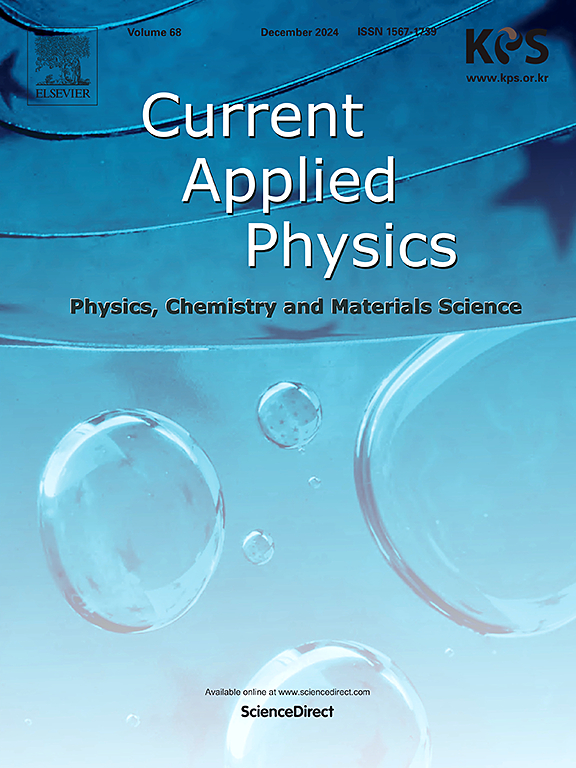Impact of Ni on the structure and electrochemical behavior of δ-MnO2 cathodes in zinc ion batteries
IF 2.4
4区 物理与天体物理
Q3 MATERIALS SCIENCE, MULTIDISCIPLINARY
引用次数: 0
Abstract
The utilization of MnO2 as a cathode material in energy storage systems such as rechargeable aqueous zinc-ion batteries shows great promise for development due to its high safety, environmental friendliness, and cost-effectiveness. Nevertheless, the manganese dioxide cathode suffers from a dissolution-redeposition reaction, leading to poor structural stability. To address these issues, this study focuses on modifying the structural properties of δ-MnO2 to overcome its drawbacks, such as low capacity and cycling stability. By synthesizing Ni-δ-MnO2 with enhanced crystalline structure, expanded lattice spacing, improved conductivity, rapid diffusion of Zn2+ ions, and electron transfer are enabled. This results in a notable high capacity of 350 mA h g−1 at 50 mA g−1, accompanied by enduring cycle stability, with the capacity maintained over 200 cycles. The morphology evolution and structure of Ni- δ-MnO2 are believed to enhance ion transportation, rendering it a promising cathode material for applications in aqueous zinc-ion batteries.

Ni对锌离子电池δ-MnO2阴极结构和电化学行为的影响
二氧化锰作为正极材料应用于可充电水性锌离子电池等储能系统中,具有较高的安全性、环保性和成本效益,具有广阔的发展前景。然而,二氧化锰阴极遭受溶解-再沉积反应,导致结构稳定性差。为了解决这些问题,本研究的重点是修改δ-MnO2的结构性质,以克服其低容量和循环稳定性等缺点。通过Ni-δ-MnO2的合成,增强了Ni-δ-MnO2的晶体结构,扩大了晶格间距,提高了电导率,实现了Zn2+离子的快速扩散和电子转移。这导致在50 mA g - 1时具有350 mA h g - 1的显着高容量,伴随着持久的循环稳定性,容量保持超过200次循环。Ni- δ-MnO2的形态演变和结构被认为可以增强离子传输,使其成为一种很有前途的水锌离子电池正极材料。
本文章由计算机程序翻译,如有差异,请以英文原文为准。
求助全文
约1分钟内获得全文
求助全文
来源期刊

Current Applied Physics
物理-材料科学:综合
CiteScore
4.80
自引率
0.00%
发文量
213
审稿时长
33 days
期刊介绍:
Current Applied Physics (Curr. Appl. Phys.) is a monthly published international journal covering all the fields of applied science investigating the physics of the advanced materials for future applications.
Other areas covered: Experimental and theoretical aspects of advanced materials and devices dealing with synthesis or structural chemistry, physical and electronic properties, photonics, engineering applications, and uniquely pertinent measurement or analytical techniques.
Current Applied Physics, published since 2001, covers physics, chemistry and materials science, including bio-materials, with their engineering aspects. It is a truly interdisciplinary journal opening a forum for scientists of all related fields, a unique point of the journal discriminating it from other worldwide and/or Pacific Rim applied physics journals.
Regular research papers, letters and review articles with contents meeting the scope of the journal will be considered for publication after peer review.
The Journal is owned by the Korean Physical Society.
 求助内容:
求助内容: 应助结果提醒方式:
应助结果提醒方式:


